Dog hole mushrooms shaped like octopuses, mushrooms that glow blue in the dark or bleeding tooth mushrooms are some of the strangest mushrooms in the world.

Gyromitra esculenta is also known as brain mushroom or turban mushroom . They are considered a popular dish in Scandinavia, Eastern Europe and the Great Lakes region of North America, but only when prepared properly. People who eat raw brain mushrooms are at risk of death.
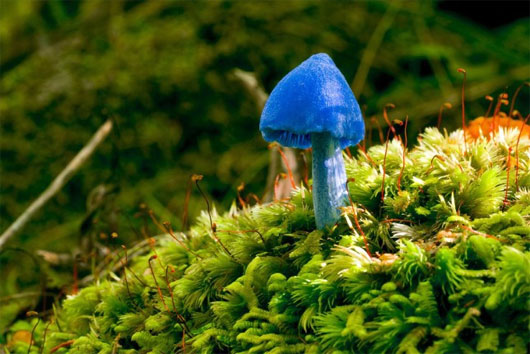
The fungus Entoloma hochstetteri is small, blue in color, and is commonly seen in New Zealand and India. The characteristic blue color is formed from three azulene pigments. This mushroom species has not been determined whether it is edible or not. Images of green mushrooms appear on stamps and the back of New Zealand banknotes.
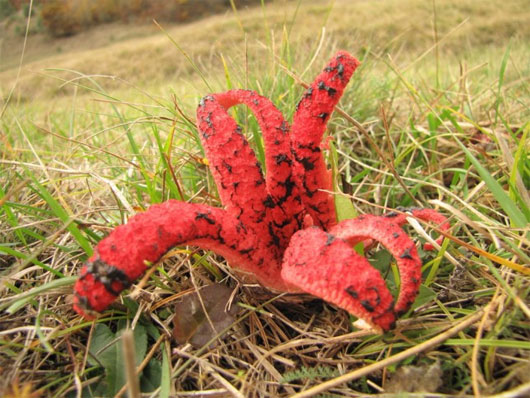
Clathrus archeri is a strange mushroom native to Australia and Tasmania. The mushroom is reddish pink in color, shaped like an octopus with about 4-7 large and long tentacles. Not only do they have a strange shape, they also emit the smell of rotten meat.
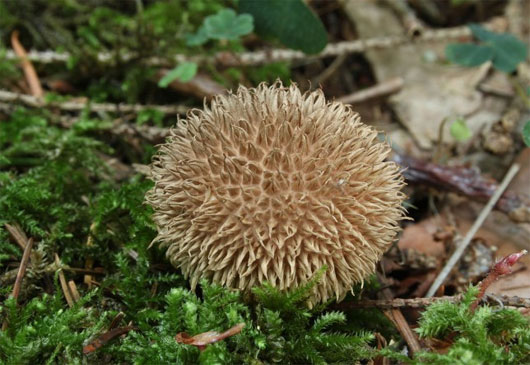
Egg mushrooms are found in Africa, Europe, Central America and North America. This mushroom is relatively small in size with a diameter of only 2.5cm, surrounded by small spines. Mushrooms can be eaten when they are young, white and firm. Some experiments show that this type of cooking can prevent the growth of certain types of disease-causing bacteria.
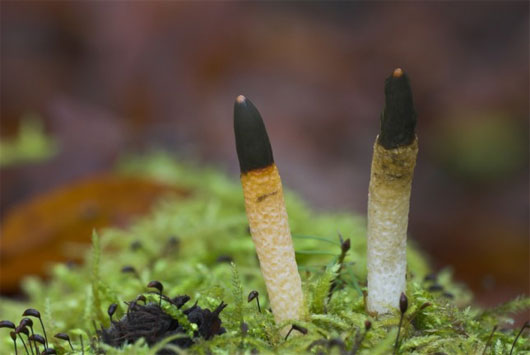
The French names for this mushroom are Phallus de Chien and Satyre des chiens . This mushroom is common in Europe, Asia and the eastern part of North America. They are found in late summer and early fall on fallen leaves and small pieces of wood. This is an inedible mushroom.

Trametes versicolor mushrooms are colorful and easily detected. Their color and shape are also associated with the image of a turkey tail, so they are also called turkey tail mushrooms. The color of the mushroom can depend on the location and age of the mushroom. This is considered a drug that can help fight cancer.
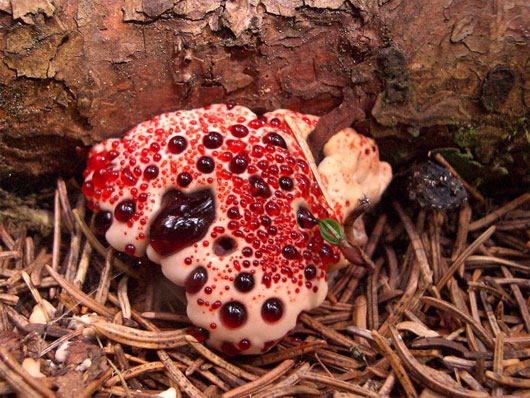
The sticky and red liquid drops that flow from this mushroom remind people of blood drops. Thanks to this characteristic, they are named bleeding tooth fungus (Hydnellum peckii) . This mushroom is also known as the “devil’s tooth” mushroom or another visually deceptive name, the “cream and strawberry” mushroom. They are found in the rain forests of North America and Europe.

The red cage mushroom (Clathrus ruber) is a mushroom with a strange shape like strange creatures in an alien movie, or like a spongy monster growing from egg-shaped white mushroom blocks. This mushroom can be eaten, but its terrible taste makes no one want to taste it.
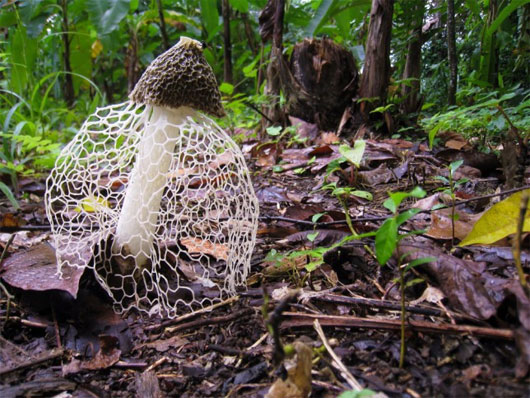
This mushroom has a unique shape like a woman’s veil. They live in the southern regions of Asia, Africa, the Americas and Australia. The upper lid has green-brown spore-containing slime to attract insects and help them disperse the spores. Mushrooms are edible and are sometimes used in Chinese cooking.
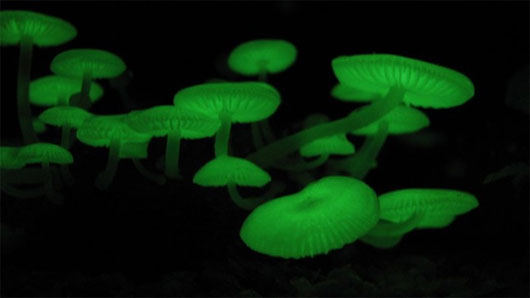
Bioluminescent mushrooms (Mycena chlorophos) live in subtropical environments of Asia, Australia and Brazil. The cap and stem emit green light in the dark. Mushrooms emit the clearest blue light when they are one day old and the ambient temperature is about 27 degrees Celsius. After the first day the mushroom cap opens, the light will gradually fade until it cannot be observed with the naked eye.
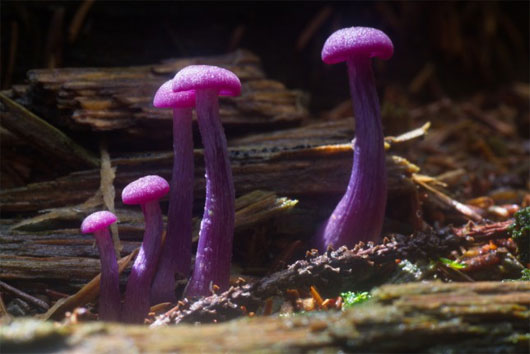
Laccaria amethystina is a purple mushroom that lives in the forests of North America, Central America, South America, Europe and Asia. Mushrooms are purple when young, and the bright purple color fades as they grow, making them harder to identify. Although this mushroom is edible, it is not a wise choice because soil pollutants such as arsenic can accumulate in the mushroom.

This strange mushroom is called by many different names such as lion’s mane mushroom, bear’s tooth mushroom, hedgehog mushroom … The mushroom originates from North America and grows on hardwood trees. Despite its rather odd appearance, this mushroom is edible and is sometimes used in Chinese cuisine.

The devil’s cigar mushroom (Chorioactis geaster) is a very rare mushroom, found only in certain areas of Texas and Japan. In Texas, the fungus grows on the roots of dead cedar trees, while in Japan, the fungus grows on dead oak trees. This mushroom is shaped like a blooming flower. (Photo: Tim Jones)
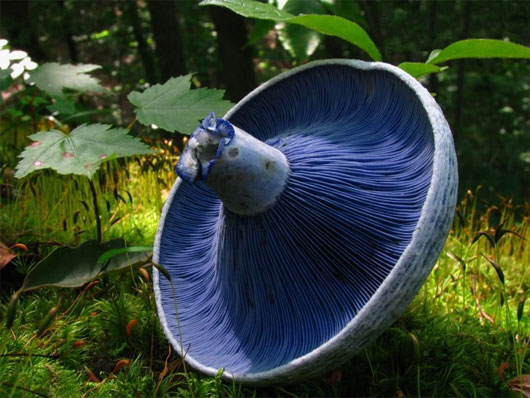
Lactarius indigo mushroom has a dark blue to light blue-gray color. Mushroom sap flows when the mushroom is cut or damaged, and the mushroom will turn green when exposed to air. The fungus lives in coniferous and deciduous forests in North America, East Asia and Central America. Although this mushroom is quite poisonous, sources say the mushroom is edible and is sold in markets in China, Guatemala and Mexico.
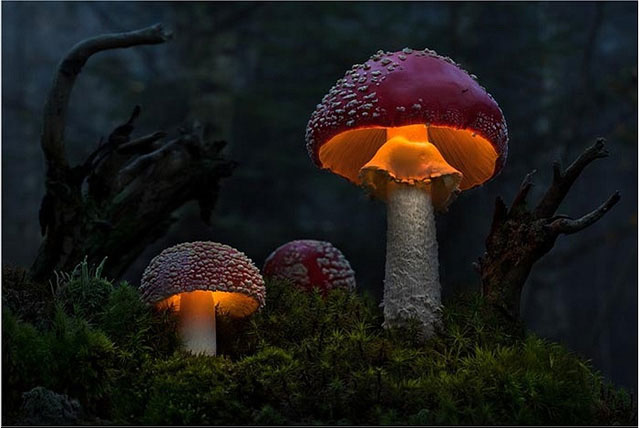
Lantern mushroom. In addition to the name lantern mushroom, the Amanita muscaria mushroom is also known as Fox Fire because the gentle red light they emit resembles the orange color of a fox’s tail. With the naked eye, people can also detect the light of this mushroom, so be sure not to eat it by mistake. The poison in the fox fire mushroom is enough to kill you in just a few minutes.
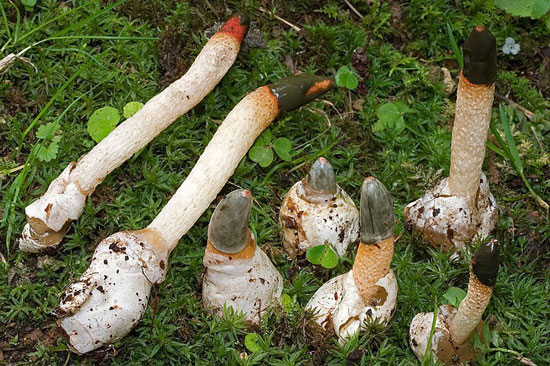
The Mutinus caninus mushroom has a rather sensitive appearance that makes many people blush. They are often found on wood chips and fallen leaves in the summer and autumn in Europe or Eastern North America. However, with this monstrous appearance, they are completely inedible, but according to local people, their spores are not toxic.
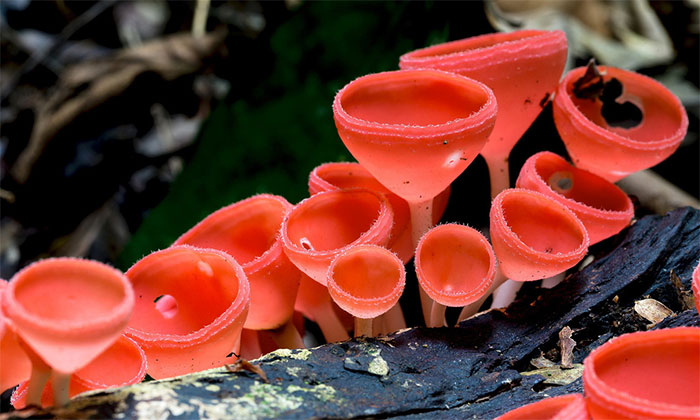
Cup mushroom: In tropical and subtropical forests, you can find small red-orange cups on rotting tree trunks. Their unusual shape reminds you of things like a cup, a reversible plunger, or even a menstrual cup. In fact, those are not cups but cup mycelium. The lychee mushroom is not an official name, but scientists often call them that way to easily distinguish them from other cap mushrooms. Tiny mushrooms, usually 2-4 cm in diameter, just a little larger than a fingernail. Its color ranges from yellow to orange, red and some species have striped colors. Their unique glass-like shape has special significance for reproduction. After every rain, these mushrooms are often filled with water, putting pressure on the spores. As the water gradually evaporates and the pressure is released, the spores will escape and spread to more places. The reproductive task of the lychee mushroom is thus completed.
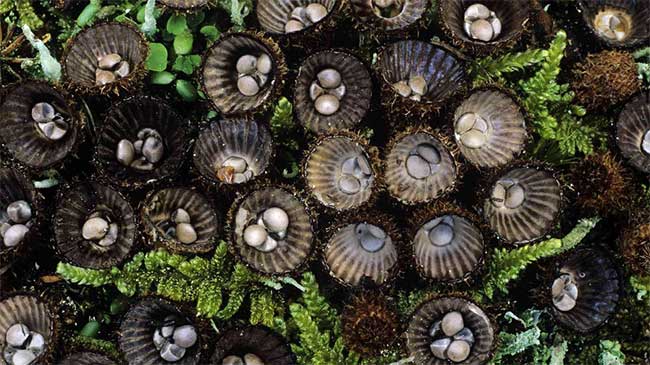
Bird’s nest mushroom: Initially, when the mushroom is young, the entire “nest” will be covered with a white membrane. As the fungus grows, this membrane is torn and the dark gray or dark brown “eggs” are exposed to the air. Reproductive spores also escape into the air and continue a new life cycle. Bird’s nest fungus often appears next to rotten wood or decomposed animal feces, shaped exactly like a bird’s nest with 2-4 “eggs” inside. Each bird’s nest mushroom is only about 4-8 mm wide, found in tropical and temperate regions.

Squid mushrooms, also known as lawyer’s wig mushrooms , are a common type of fungus often found growing in lawns and garbage areas. Initially, the squid mushroom has a white round cylinder, then the cap will open, gradually turn black and secrete a liquid like ink drops filled with spores. The special thing is that this mushroom will wilt within a few hours after being picked or releasing spores.
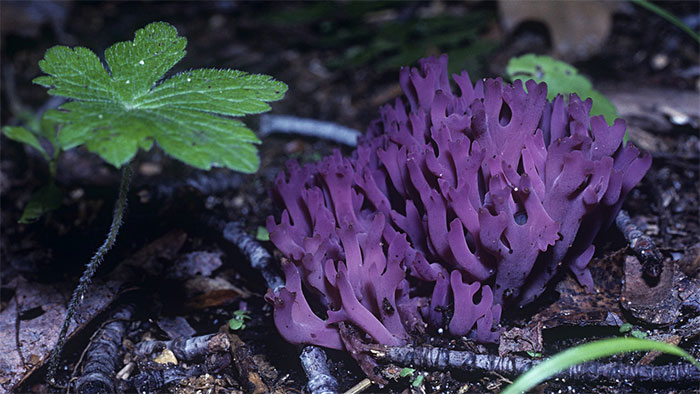
Coral mushrooms on land: The belief that corals only live in the ocean will change when you see this type of fungus. Unlike regular mushrooms that have stems and caps, mushrooms from the Clavariaceae family have a coral-like shape. They are usually 5-12cm long and 2-8cm wide. Like marine corals, terrestrial coral mushrooms come in many colors such as white, purple, red and yellow.
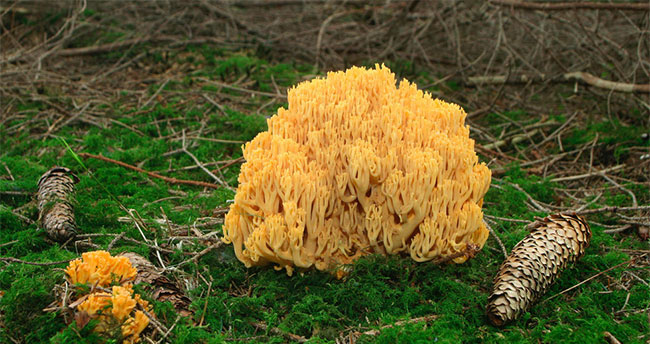
Golden coral mushroom: Despite its bright color, coral mushroom does not have a distinctive odor. It is edible in small quantities and tastes like radish and cucumber. Their color can turn gray or brown over time or after rain. You can find coral mushrooms in Australia, New Zealand, North America, South America and Asia.
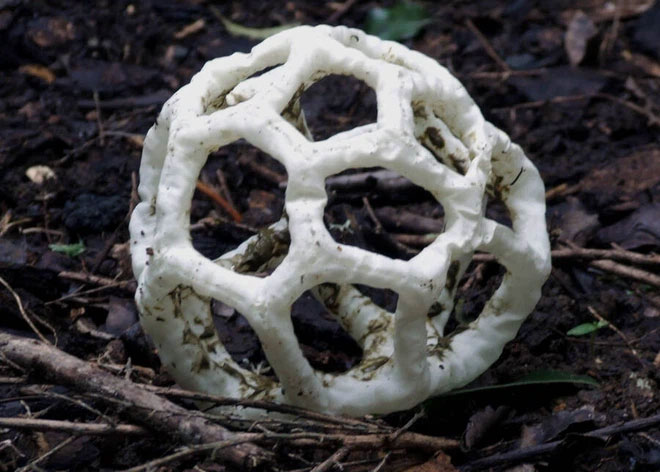
Ileodictyon cibarium mushroom: Found in Australia, New Zealand, South Africa and Chile, ancestral to the Maori, the indigenous people of New Zealand, is known by more than 35 different names — one of which is “ghost dung ”. Like many other strange mushrooms, this mushroom has a slimy, foul-smelling layer that attracts flies that then spread their spores. At a young age, these strange mushrooms begin to have egg-shaped bodies that are often white or gray in color. But when it matures, a basket-like web opens from its body like an egg, releasing a foul-smelling slime.
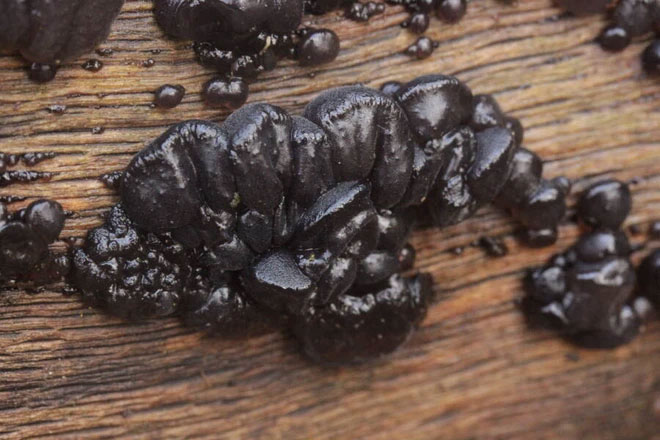
Exidia glandulosa mushroom (Black Witch Butter): Jean-Baptiste Francois Bulliard, a French naturalist, first noted this strange mushroom in 1789. They are so named because of their color and oiliness. its in wet weather, Black Witch Butter appears on dead hardwood during fall and winter. In hot and dry weather, these mushrooms have a brownish-green color.
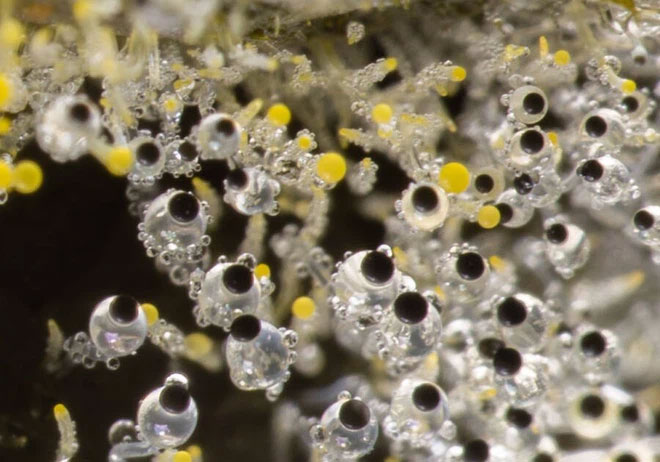
Pilobus crystalallinus mushroom: This is a rather strange mushroom, it often grows on animal feces in a vertical direction. Like a real cannon, this mushroom releases spores faster than a bullet from a gun. This action is invisible to the naked eye, but the speed at which one of their spores moves is about 82 feet per second.





